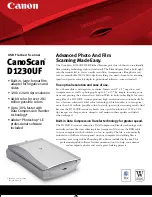
T
AG
P
ROGRAMMING
C
HAPTER
5
R
EADER
I
NTERFACE
G
UIDE
D
OC
. C
ONTROL
# 8101938-000 R
EV
05
82
Programming Range
Alien tags can be programmed over a substantial range. In a free space
environment with no attenuation and a linear antenna the tag should be set no
closer than 50 cm (20 in) from the antenna when attempting to program. The tag
may be placed closer to the antenna but programming reliability may suffer. If
programming is attempted very close to the antenna, the tag may be
permanently damaged and rendered un-programmable. Again, your physical
environment will affect programming results due to power nulls created by
reflections from the floor, walls, metal structures, etc. When using a circular
antenna in a free space environment with no attenuator, the tag should be set no
closer than 50 cm from the antenna when attempting to program.
Programming Problems
The most common result of poor programming is that the tag will no longer read
in Global Scroll or Inventory modes. This is due to the tag memory being erased
or incompletely programmed. Tags in this state can be read using the Verify Tag
command and can be programmed using the Program Tag commands.
Typically, tag erasure without programming success (the Verify Tag command
will return all 0’s) is caused by insufficient power since the erase process
requires less energy than the programming process. Power should be increased
by either decreasing attenuation or moving the tag closer to the antenna and
repeating the programming process.
Incompletely programmed tags can be caused by insufficient or excessive
programming power. Revaluate the tag position and the signal attenuation and
repeat the programming sequence.
A step attenuator is a powerful tool in evaluating programming conditions. When
using the attenuator, set it to the highest value at which you can reliably read the
tag. You can then step down approximately 10 dB from this value as an estimate
of the proper attenuation for programming. By varying the attenuator value you
can optimize programming conditions over the range of the other variables in
your application.
Programming Slept Tags
A common programming mistake is attempting to program a slept tag. A tag may
be left in a sleep state after reading it, and subsequent attempts to program it
may fail. This can be remedied by issuing an explicit "Wake" command before
programming, or by carefully setting the Acquire parameters, AcqSleepCount
and AcqExitWakeCount.
When AcqSleepCount is not zero, the reader puts tags to sleep as it reads them,
making it easier to find other tags in the field. The AcqExitWakeCount property
allows you to specify a number of Wake commands to be issued after each read
cycle – waking up the entire tag population that was read in that cycle. If
AcqExitWakeCount is zero, these Wake commands aren't issued at all, and tags
may be left in a slept state.
By either setting AcqSleepCount to zero, or making sure AcqExitWakeCount is
not zero, you can ensure that tags are not left sleeping.
Summary of Contents for ALR-8780
Page 8: ......















































